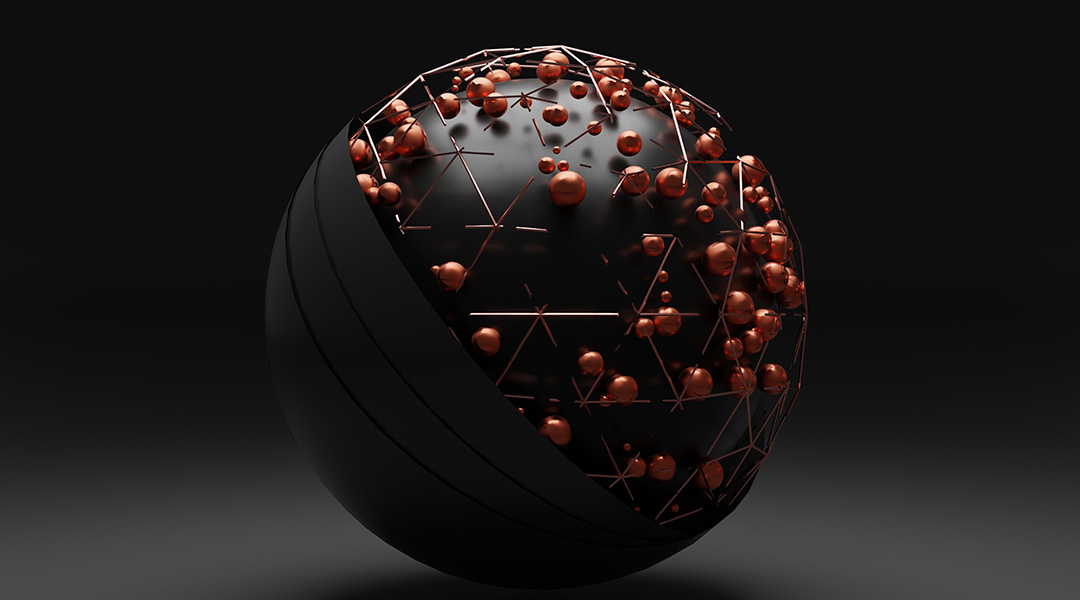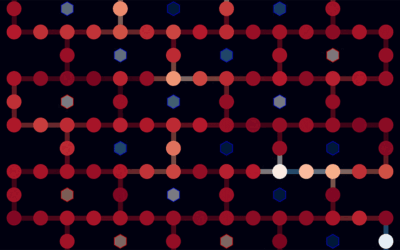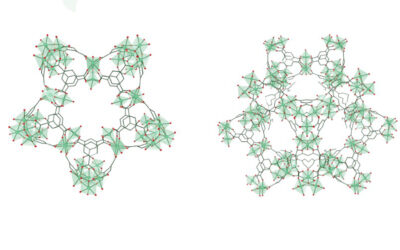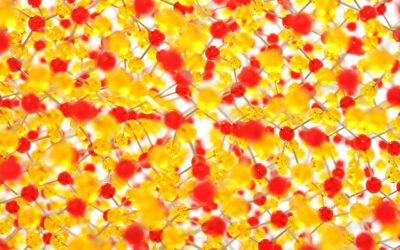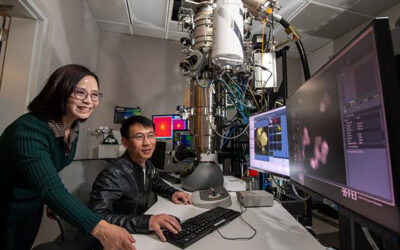Scientists are taking an alternative approach to computing, replacing conventional components called transistors with mixed-valence molecules to build quantum-dot cellular automata.
“[This] is a low-power classical computing paradigm,” the researchers wrote in their study published in the Journal of Computational Chemistry. “Mixed-valence molecules may provide nanometer-scale [computing] devices which support terahertz switching speeds [compared to current gigahertz in transistor-based processors] and room-temperature operation.”
This shift away from transistors is necessary as improvements in transistor-based computers have slowed significantly in recent years due to physical limitations (only so many transistors can be fit onto a chip) and diminishing gains in performance.
Mixed-valence molecules
An intriguing contender in the field of alternative computing systems involves those built on mixed valence molecules, which possess outer electrons known as valence electrons capable of “hopping” around the molecule in response to an external electric field.
This behavior arises because, among all the electrons that make up a molecule, they are the least tightly bound to the atom’s nucleus. This makes them more sensitive to changes in their environment, such as applied electromagnetic fields or the influence of a nearby molecule or atom.
In a computer based on mixed-valence molecules, the fundamental units are the molecules themselves, where information is stored by the position of the valence electron within the molecule, analogous to bits found in conventional computers.
“The basic idea is to manipulate localized electronic states (or molecular orbitals) in ‘cells’ not to switch current as with transistors, but rather to represent information based upon the local molecular charge,” explains David Drabold, Distinguished Professor in the Department of Physics and Astronomy at Ohio University, who was not involved in the study. “The concept is suitable for general purpose computing, unlike quantum computing.”
To understand which molecules would act as the best “bits”, scientists led by Enrique Blair, associate professor in the Department of Electrical and Computer Engineering of Baylor University in Texas, conducted a theoretical analysis of the properties of several mixed-valence molecules, such as a hydrogen molecular cation (H2+), hydrogen molecular anion (H2-), and various cationic and anionic carbon-based molecules, like ethylene and allyl dimers, that had previously been proposed in the literature for this purpose.
How well a mixed-valence molecule can function as computer bit depends on how sensitive its valence electrons are to the electric field as well as the degree to which its state changes as the mixed-valence molecule interacts with nearby ions — molecules or atoms with extra or missing electrons.
The influence of another randomly located ion can affect the position of a valence electron, how it behaves, and the magnitude of the electric field needed to transfer the electron from one state to another — a behavior crucial to the basic functions of these computing devices.
“When ionic [mixed-valence] molecules are used as quantum-dot cellular automata cells, external counterions produced during device preparation localize randomly near the devices,” explained the researchers. “Such randomly-located stray charge can affect […] device operation in an uncontrollable and unpredictable way.”
Zwitterions to the rescue
The scientists therefore used computational modeling to study the dynamics and behavior of valence electrons when under the influence of a nearby ion in known ionic mixed-valence molecules. They found the valence electrons in the previously mentioned molecules were in fact strongly influenced by ions in their vicinity, a problem because if the bits cannot maintain their states, the computer will not function reliably.
Zwitterions have been explored as a possible solution to this problem as, compared to the other candidates that exist as charged molecules, they contain both a positive and negative charge set within the same molecule at well-defined locations, resulting in a net neutral charge.
“We design two types of zwitterionic neutral molecules with built-in counterions,” the researchers explained. “By design, the built-in counterion avoids biasing any molecular device state, since it is located at the center of the molecule.”
As a result of the valence electrons’ location, these zwitterions are less likely to attract random external ions that might occur in the vicinity of the molecular bit, which allows them to better retain their shape and the ability of their electrons to respond in a desired way.
“This is a promising and highly original approach to overcome the limitations of conventional computing technology, which appears to be approaching fundamental physical limits to further development,” Drabold said. “The hope is for devices with higher density and reduced heat generation, both holy grails of novel computer design.”
Real-world tests still needed
Although the team’s results are very promising, there is still a lot of experimental and computational work ahead to verify how these molecular bits might behave in a real-world setting. Feasibility will depend on how well the proposed zwitterions perform, and with the implementation of any large-scale technology, many unforeseen difficulties could arise.
“A practical limitation of their approach is that they are limited to [computational] molecules, when the real materials will of course be three dimensional, and possibly involve long-range electric interaction effects obscured by molecular calculations,” commented Drabold. “Thus, a next step might include a more careful analysis of their computational scheme in the real materials.”
“As for any new technology, there are barriers to the practical realization,” Drabold continued. “What molecules should be used? What growth process? What are the effects of impurities? How can one ensure adequate small errors at practical temperatures? The authors considered only one important problem: that of ‘ionic noise’.”
The project, for now, is an excellent starting point, with the researchers hopeful that there are other zwitterionic molecules that may be even better suited to this purpose.
Although a computer based on mixed-valence molecules is still far from complete, this research is an important step towards creating devices that could be orders of magnitude more powerful, compact, and energy efficient than those we currently have at our disposal.
Reference: Einrique P Blair, et al., Ab initio studies of counterion effects in molecular quantum-dot cellular automata, Journal of Computational Chemistry (2023). DOI: 10.1002/jcc.27247
Feature image credit: Shubham Dhage on Unsplash

